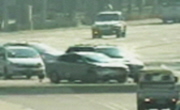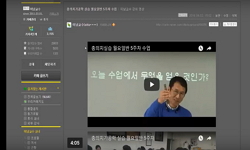Sound power is one of the most important elements to predict and evaluate the noise emitted from the noise sources. But it has been used developing the indirect method to calculate the sound power by using the sound pressure levels measured by lots of...
http://chineseinput.net/에서 pinyin(병음)방식으로 중국어를 변환할 수 있습니다.
변환된 중국어를 복사하여 사용하시면 됩니다.
- 中文 을 입력하시려면 zhongwen을 입력하시고 space를누르시면됩니다.
- 北京 을 입력하시려면 beijing을 입력하시고 space를 누르시면 됩니다.
https://www.riss.kr/link?id=T12549065
- 저자
-
발행사항
서울: 서울과학기술대학교 철도전문대학원, 2011
-
학위논문사항
학위논문(박사) -- 서울과학기술대학교 철도전문대학원 , 철도차량시스템공학과 , 2011. 8
-
발행연도
2011
-
작성언어
한국어
- 주제어
-
KDC
557 판사항(5)
-
발행국(도시)
서울
-
형태사항
ⅵ, 91 p.; 26 cm.
-
일반주기명
지도교수: 이희성, 김재철
참고문헌: p. 85-87 - 소장기관
-
0
상세조회 -
0
다운로드
부가정보
다국어 초록 (Multilingual Abstract)
Sound power is one of the most important elements to predict and evaluate the noise emitted from the noise sources. But it has been used developing the indirect method to calculate the sound power by using the sound pressure levels measured by lots of researchers because it is impossible to measure the sound power directly during the running of rolling stock. This method, however, is not considered the emission characteristics for each type of noise sources so, it should calculated the sound power considering the emission characteristics for each type of noise sources in order to calculate the precise value of the sound power emitted from the noise sources. This thesis measured the running noise of EMU, Mugunghwa, KTX trains operating domestically, selected the propulsion noise and rolling noise among the main noises in the whole noises emitted from rolling stocks, suggested the way to assume the sound power reflecting the emission characteristics and modelling suitable for each rolling stock characteristics, checked out the validity through the comparison of the assumption method, and concluded the following results next below.
Rolling noise depending on the contact between wheel and rail modeling as the form of point source listed continuously noise source for rolling stock and the propulsion noise depending on the propulsion equipment such as engines & motors are separated and then we suggested the way to assume the sound power about each type of noise source considering the emission characteristics for each noise source.
As a result of the calculation of the sound power about the domestic rolling stocks using the assumption method of sound power suggested by this study, we figured it out that the sound power was ranked by Mugunghwa, EMU, KTX in sequence in the range of the same speed. The reason why was the sound power of diesel engine was bigger than electric propulsion equipment like motor block and the rolling stock structure & design difference just like the main cause of the rolling noise such as the number of bogies and difference of suspension was analyzed.
As a result of the sound power, Mugunghwa train has big propulsion noise emitted from diesel engine compared to rolling noise, KTX train has the big propulsion noise since the sound power of motor block compared with diesel engine is low relatively and has a number of noise sources of propulsion.
We checked it out that the sound power considering the moving effect of noise sources while high speed rolling stock like KTX was running at the rate of 300km/h should be calculated and then the results are united.
Using the noise measurement of domestic rolling stocks & analysis result, this study showed the validity of the assumption method of the sound power showing the identical result after reviewing the calculation method of sound power according to the assumption method of the sound power suggested and foreign experience.
국문 초록 (Abstract)
음향파워는 소음원으로부터 방사되는 소음의 예측 및 평가를 위한 가장 중요한 요소 중에 하나이다. 그러나 철도차량이 주행할 때 음향파워를 직접 측정하는 것은 불가능하기 때문에 많은 ...
음향파워는 소음원으로부터 방사되는 소음의 예측 및 평가를 위한 가장 중요한 요소 중에 하나이다. 그러나 철도차량이 주행할 때 음향파워를 직접 측정하는 것은 불가능하기 때문에 많은 연구자가 측정된 음압레벨을 이용해서 음향파워를 계산하는 간접적인 방법을 개발하여 사용하였다. 그러나 이 방법은 소음원별 방사특성이 고려되지 않은 것으로 음원으로부터 방사되는 음향파워의 정확한 값을 계산하기 위해서는 소음원별 방사특성을 고려하여 음향파워를 계산하여야 한다. 이 논문은 국내에서 운행하고 있는 전기동차(EMU), 무궁화열차, KTX열차의 주행소음을 측정하고, 철도차량에서 방사되는 소음원 중 주소음원을 동력소음과 전동소음으로 선정하고 각각의 차량특성에 맞는 모델링과 방사특성을 반영하여 음향파워를 추정하는 방법을 제안하고 추정방법에 대한 비교를 통해 타당성을 확인하였으며 다음과 같은 결론을 얻었다.
철도차량을 음원이 연속적으로 나열되어있는 점음원 형태로 모델링하여 차륜과 레일의 접촉에 의한 전동소음과 엔진 및 모터 등 동력장치에 의한 동력소음으로 분리하고 소음원별 방사특성을 고려하여 각각의 소음원에 대한 음향파워를 추정하는 방법을 제시하였다.
본 연구에서 제시한 음향파워 추정방법을 이용하여 국내 철도차량에 대한 음향파워를 계산한 결과 동일한 속도영역에서는 무궁화열차, 전기동차, KTX열차 순으로 음향파워가 작은 것을 알 수 있었다. 그 이유는 디젤엔진이 모터블럭 등 전기동력장치보다 음향파워가 크고 전동소음의 주 소음원인 대차의 수와 현가장치의 차이 등 차량구조 및 설계 차이에 인한 것으로 분석 되었다.
음향파워를 분석한 결과, 무궁화열차는 전동소음에 비해서 디젤엔진에서 방사되는 동력소음의 기여도가 크게 나타나고 있으며, KTX열차는 동력소음에 비해서 전동소음의 기여도가 크게 나타난 것은 디젤엔진에 비해 모터블럭 등 전기동력장치의 음향파워가 상대적으로 작고 차륜과 레일의 접촉에 의한 전동소음의 소음원 개수가 많기 때문인 것으로 분석되었다.
KTX와 같은 고속열차가 300㎞/h 이상으로 주행할 때에는 소음원의 이동 효과를 고려하여 음향파워를 계산하여야 측정결과와 일치되는 것을 확인하였다.
국내 철도차량의 소음 측정 및 분석결과를 이용하여 본 연구에서 제시한 음향파워의 추정방법과 국외의 경험에 의한 음향파워 계산방법을 비교 검토한 결과 거의 동일한 결과를 나타내어 본 음향파워 추정방법의 타당성을 확인하였다.
목차 (Table of Contents)
- 요약 ⅰ
- 표목차 ⅲ
- 그림목차 ⅳ
- Ⅰ. 서 론 1
- 1. 연구의 배경 및 목적 1
- 요약 ⅰ
- 표목차 ⅲ
- 그림목차 ⅳ
- Ⅰ. 서 론 1
- 1. 연구의 배경 및 목적 1
- 2. 연구의 방법 2
- 3. 국내․외 연구 동향 3
- 4. 연구내용 및 범위 4
- Ⅱ. 이론적 배경 6
- 1. 소리와 소음 6
- 가. 소리와 소음 6
- 나. 소음의 감쇠 7
- 다. 실외에서의 음의 감쇠 9
- 2. 환경소음의 평가 및 측정 12
- 가. 환경소음의 분류 12
- 나. 환경소음의 평가 13
- 다. 소음 평가량의 종류 13
- 3. 음압레벨과 음향파워레벨 24
- 가. 음압레벨 24
- 나. 음향파워레벨 24
- 4. 음향파워레벨의 측정방법 27
- 가. 음압파워레벨의 측정 27
- 나. 음압에너지레벨의 측정 38
- 다. 규격별 음향파워 측정기준 42
- Ⅲ. 철도소음원 모델 및 음향파워 계산 47
- 1. 철도소음의 종류 및 발생원인 47
- 가. 철도소음의 종류 47
- 나. 철도소음의 발생원인 49
- 2. 철도차량의 소음원 모델 55
- 가. 동력분산식 차량의 소음원 모델 56
- 나. 동력집중식 차량의 소음원 모델 58
- 3. 음향 파워의 계산 61
- Ⅳ. 소음계산 및 측정결과 비교분석 63
- 1. 소음 측정방법 63
- 2. 계산결과와 측정결과의 비교분석 65
- 가. 동력분산식 차량 65
- 나. 동력집중식 차량 67
- 다. 음원의 이동효과 75
- Ⅴ. 음향파워의 추정결과 및 타당성 검토 79
- 1. 음향파워 추정결과 79
- 2. 계산결과의 타당성 검토 81
- Ⅵ. 결론 84
- 참고문헌 85
- 영문초록(Abstract) 88
- 감사의 글 90












